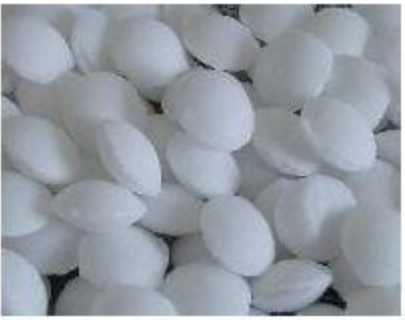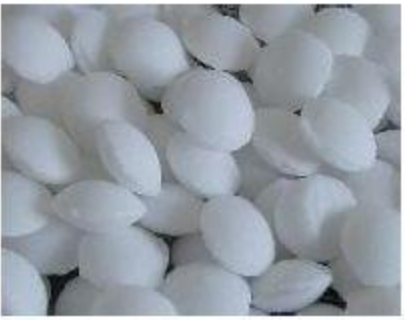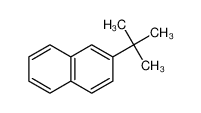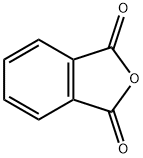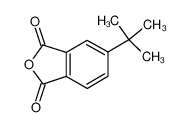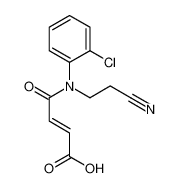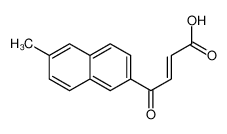| Product name | maleic anhydride |
|---|
| Product number | - |
|---|---|
| Other names | Toxilic anhydride |
| Identified uses | For industry use only. Maleic anhydride is used primarily in the formation of unsaturated polyester resins for use in boats, autos, trucks, buildings, piping, and electrical goods. Lube oil adhesives synthesized from maleic anhydride are used to prolong oil-change intervals and improve engine efficiency. Maleic anhydride is also used to make copolymers, pesticides, and other organic compounds, and in Diels-Alder syntheses. |
|---|---|
| Uses advised against | no data available |
| Company | MOLBASE (Shanghai) Biotechnology Co., Ltd. |
|---|---|
| Address | Floor 4 & 5, Building 12, No. 1001 North Qinzhou Road, Xuhui District, Shanghai, China |
| Telephone | +86(21)64956998 |
| Fax | +86(21)54365166 |
| Emergency phone number | +86-400-6021-666 |
|---|---|
| Service hours | Monday to Friday, 9am-5pm (Standard time zone: UTC/GMT +8 hours). |
Acute toxicity - Oral, Category 4
Skin corrosion, Category 1B
Skin sensitization, Category 1
Respiratory sensitization, Category 1
2.2 GHS label elements, including precautionary statements| Pictogram(s) |  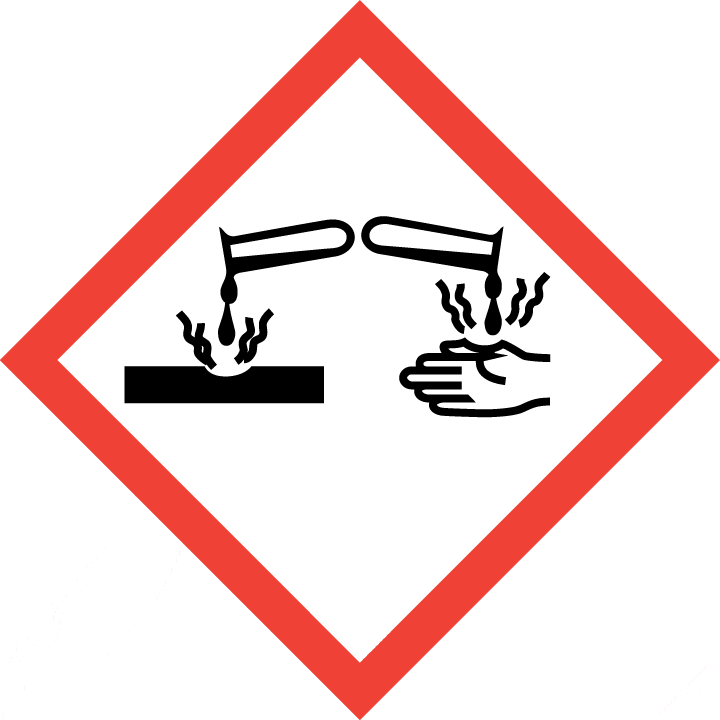  |
|---|---|
| Signal word | Danger |
| Hazard statement(s) | H302 Harmful if swallowed H314 Causes severe skin burns and eye damage H317 May cause an allergic skin reaction H334 May cause allergy or asthma symptoms or breathing difficulties if inhaled |
| Precautionary statement(s) | |
| Prevention | P264 Wash ... thoroughly after handling. P270 Do not eat, drink or smoke when using this product. P260 Do not breathe dust/fume/gas/mist/vapours/spray. P280 Wear protective gloves/protective clothing/eye protection/face protection. P261 Avoid breathing dust/fume/gas/mist/vapours/spray. P272 Contaminated work clothing should not be allowed out of the workplace. P284 [In case of inadequate ventilation] wear respiratory protection. |
| Response | P301+P312 IF SWALLOWED: Call a POISON CENTER/doctor/…if you feel unwell. P330 Rinse mouth. P301+P330+P331 IF SWALLOWED: Rinse mouth. Do NOT induce vomiting. P303+P361+P353 IF ON SKIN (or hair): Take off immediately all contaminated clothing. Rinse skin with water [or shower]. P363 Wash contaminated clothing before reuse. P304+P340 IF INHALED: Remove person to fresh air and keep comfortable for breathing. P310 Immediately call a POISON CENTER/doctor/… P321 Specific treatment (see ... on this label). P305+P351+P338 IF IN EYES: Rinse cautiously with water for several minutes. Remove contact lenses, if present and easy to do. Continue rinsing. P302+P352 IF ON SKIN: Wash with plenty of water/... P333+P313 If skin irritation or rash occurs: Get medical advice/attention. P362+P364 Take off contaminated clothing and wash it before reuse. P342+P311 If experiencing respiratory symptoms: Call a POISON CENTER/doctor/... |
| Storage | P405 Store locked up. |
| Disposal | P501 Dispose of contents/container to ... |
none
3.Composition/information on ingredients 3.1 Substances| Chemical name | Common names and synonyms | CAS number | EC number | Concentration |
|---|---|---|---|---|
| maleic anhydride | maleic anhydride | 108-31-6 | none | 100% |
Consult a physician. Show this safety data sheet to the doctor in attendance.
If inhaledFresh air, rest. Half-upright position. Refer for medical attention.
In case of skin contactFirst rinse with plenty of water for at least 15 minutes, then remove contaminated clothes and rinse again.
In case of eye contactFirst rinse with plenty of water for several minutes (remove contact lenses if easily possible), then refer for medical attention.
If swallowedRinse mouth. Give one or two glasses of water to drink. Do NOT induce vomiting. Refer for medical attention .
4.2 Most important symptoms/effects, acute and delayedInhalation causes coughing, sneezing, throat irritation. Skin contact causes irritation and redness. Vapors cause severe eye irritation; photophobia and double vision may occur. (USCG, 1999)
4.3 Indication of immediate medical attention and special treatment needed, if necessaryImmediate first aid: Ensure that adequate decontamination has been carried out. If patient is not breathing, start artificial respiration, preferably with a demand-valve resuscitator, bag-valve-mask device, or pocket mask, as trained. Perform CPR as necessary. Immediately flush contaminated eyes with gently flowing water. Do not induce vomiting. If vomiting occurs, lean patient forward or place on left side (head-down position, if possible) to maintain an open airway and prevent aspiration. Keep patient quiet and maintain normal body temperature. Obtain medical attention. /Organic acids and related compounds/
5.Fire-fighting measures 5.1 Extinguishing media Suitable extinguishing mediaWear self-contained breathing apparatus for firefighting if necessary.
5.2 Specific hazards arising from the chemicalBehavior in Fire: When heated above 148.89°C in the presence of various materials may generate heat and carbon dioxide. Will explode if confined. (USCG, 1999)
5.3 Special protective actions for fire-fightersWear self-contained breathing apparatus for firefighting if necessary.
6.Accidental release measures 6.1 Personal precautions, protective equipment and emergency proceduresUse personal protective equipment. Avoid dust formation. Avoid breathing vapours, mist or gas. Ensure adequate ventilation. Evacuate personnel to safe areas. Avoid breathing dust. For personal protection see section 8.
6.2 Environmental precautionsPersonal protection: face shield, thermal gloves, chemical protection suit and particulate filter respirator adapted to the airborne concentration of the substance. See Notes. Sweep spilled substance into covered containers.
6.3 Methods and materials for containment and cleaning upPick up and arrange disposal without creating dust. Sweep up and shovel. Keep in suitable, closed containers for disposal.
7.Handling and storage 7.1 Precautions for safe handlingAvoid contact with skin and eyes. Avoid formation of dust and aerosols. Avoid exposure - obtain special instructions before use.Provide appropriate exhaust ventilation at places where dust is formed. For precautions see section 2.2.
7.2 Conditions for safe storage, including any incompatibilitiesDry. Separated from strong oxidants, strong bases and food and feedstuffs.Keep container tightly closed in a dry and well-ventilated place. Moisture sensitive. Storage class (TRGS 510): Non-combustible, corrosive hazardous materials
8.Exposure controls/personal protection 8.1 Control parameters Occupational Exposure limit valuesRecommended Exposure Limit: 10 Hr Time-Weighted Avg: 1 mg/cu m (0.25 ppm).
Biological limit valuesno data available
8.2 Appropriate engineering controlsHandle in accordance with good industrial hygiene and safety practice. Wash hands before breaks and at the end of workday.
8.3 Individual protection measures, such as personal protective equipment (PPE) Eye/face protectionSafety glasses with side-shields conforming to EN166. Use equipment for eye protection tested and approved under appropriate government standards such as NIOSH (US) or EN 166(EU).
Skin protectionWear impervious clothing. The type of protective equipment must be selected according to the concentration and amount of the dangerous substance at the specific workplace. Handle with gloves. Gloves must be inspected prior to use. Use proper glove removal technique(without touching glove's outer surface) to avoid skin contact with this product. Dispose of contaminated gloves after use in accordance with applicable laws and good laboratory practices. Wash and dry hands. The selected protective gloves have to satisfy the specifications of EU Directive 89/686/EEC and the standard EN 374 derived from it.
Respiratory protectionWear dust mask when handling large quantities.
Thermal hazardsno data available
9.Physical and chemical properties| Physical state | White crystals |
|---|---|
| Colour | Orthorhombic needles from chloroform; commercial grades furnished in fused form, as briquettes |
| Odour | Pungent odor |
| Melting point/ freezing point | 47°C(lit.) |
| Boiling point or initial boiling point and boiling range | 200°C(lit.) |
| Flammability | Combustible Solid, but may be difficult to ignite.Combustible. |
| Lower and upper explosion limit / flammability limit | Flammable limits: 1.4% by volume (Lower) 7.1% by volume (Upper) |
| Flash point | 65°C(lit.) |
| Auto-ignition temperature | 465.56°C |
| Decomposition temperature | no data available |
| pH | pH of water solutions: 2.42 at 1X10-2 M; 2.62 at 5X10-3 M; 3.10 at 1X10-4 M |
| Kinematic viscosity | Viscosity in mPa.s (cP): 0.61 at 60°C; 1.07 at 90°C; 0.6 at 150°C |
| Solubility | In water:79 g/100 mL (25 ºC) |
| Partition coefficient n-octanol/water (log value) | log Kow = 1.62 |
| Vapour pressure | 0.16 mm Hg ( 20 °C) |
| Density and/or relative density | 1.48 |
| Relative vapour density | 3.4 (vs air) |
| Particle characteristics | no data available |
no data available
10.2 Chemical stabilityStable under normal laboratory storage conditions.
10.3 Possibility of hazardous reactionsGreat care must be taken with the molten and vapor as material in this state is flammable. The material is a combustible solid... .MALEIC ANHYDRIDE react vigorously on contact with oxidizing materials. Reacts exothermically with water or steam. Undergoes violent exothermic decomposition reactions, producing carbon dioxide, in the presence of strong bases (sodium hydroxide, potassium hydroxide, calcium hydroxide), alkali metals (lithium, sodium, potassium), aliphatic amines (dimethylamine, trimethylamine), aromatic amines (pyridine, quinoline) at temperatures above 150° C [Vogler, C. A. et al., J. Chem. Eng. Data, 1963, 8, p. 620]. A 0.1% solution of pyridine (or other tertiary amine) in maleic anhydride at 185°C gives an exothermic decomposition with rapid evolution of gas [Chem Eng. News 42(8); 41 1964]. Maleic anhydride is known as an excellent dienophile in the Diels-Alder reaction to produce phthalate ester derivatives. These reactions can be extremely violent, as in the case of 1-methylsilacyclopentadiene [J. Organomet., Chem., 1979, 179, c19]. Maleic anhydride undergoes a potentially explosive exothermic Diels-Alder reaction with 1-methylsilacyclopenta-2,4-diene at 150C [Barton, T. J., J. Organomet. Chem., 1979, 179, C19], and is considered an excellent dieneophile for Diels-Alder reactions [Felthouse, Timothy R. et al. "Maleic Anhydride, Maleic Acid, and Fumaric Acid." Kirk-Othmer Encyclopedia of Chemical Technology. John Wiley & Sons, Inc. 2005].
10.4 Conditions to avoidno data available
10.5 Incompatible materialsIncompatible with alkali metals, caustics, and amines at greater than 150 deg F.
10.6 Hazardous decomposition productsMaleic anhydride decomposes exothermically, evolving carbon dioxide in the presence of dimethylamine, triethylamine, pyridine, or quinoline at temperatures above 150°C.
11.Toxicological information Acute toxicity- Oral: LD50 Guinea pig oral 390 mg/kg
- Inhalation: no data available
- Dermal: no data available
no data available
Serious eye damage/irritationno data available
Respiratory or skin sensitizationno data available
Germ cell mutagenicityno data available
CarcinogenicityA4; Not classifiable as a human carcinogen.
Reproductive toxicityNo information is available on the reproductive or developmental effects of maleic anhydride in humans. No teratogenic or fetotoxic effects were observed in the offspring of rats exposed via gavage or diet.
STOT-single exposureno data available
STOT-repeated exposureno data available
Aspiration hazardno data available
12.Ecological information 12.1 Toxicity- Toxicity to fish: LC50; Species: Lepomis macrochirus (Bluegill); Conditions: static, aeration by "oxygenation interface method" (contact between pure oxygen and test sample); test organisms acclimated to test temperature for 10-14 days; 20°C, pH 6.9-7.5, dechlorinated water, total hardness 84.0-163.0 mg/L (as CaCO3), 5 mg O2/L or higher; Concentration: 150 mg/L for 24 hr
- Toxicity to daphnia and other aquatic invertebrates: EC50; Species: Daphnia magna (Water flea); Conditions: static, 20°C, pH 8.0; test solution neutralized; Concentration: 5600 mg/L for 24 hr; Effect: immobilization
- Toxicity to algae: EC50; Species: Haematococcus pluvialis (Algae); Concentration: 190 mg/L for 4 hr; Effect: inhibition of oxygen production /Conditions of bioassay not specified in source examined
- Toxicity to microorganisms: no data available
AEROBIC: Maleic anhydride, present at 100 mg/L, reached 54.8% of its theoretical BOD in 2 weeks using an activated sludge inoculum at 30 mg/L and the Japanese MITI test(1). Using OECD Guideline 301B (Ready Biodegradability: CO2 Evolution Test), maleic anhydride was found to be readily biodegradable with CO2 evolution rates of 61.6% after 4 days and 93.2% after 11 days(2); it was noted that maleic anhydride hydrolyzes under the test conditions and, as a result, maleic acid is believed to be the test material investigated in the study(2). Another OECD Guideline 301B test determined >90% CO2 evolution within 25 days(2). Using OECD Guideline 301E (Ready Biodegradability: Modified OECD Screening Test) and a non-adapted activated sludge inoculum, maleic anhydride was found to be readily biodegradable with a 73-81% removal after 28 days(2). The TOC and COD-Mn of maleic anhydride, present at 170 mg/L in industrial wastewater, was reduced by 98% and 99%, respectively, after 1 day of acclimation with an activated sludge inocculum from a waste water treatment plant(3). In one report 99% removal was achieved in 4 hr by activated sludge(4). Others report 40-60% theoretical BOD in 5 days with sewage inoculum(5,6). The data suggest that maleic anhydride is expected to biodegrade rapidly(SRC); however, maleic anhydride hydrolyzes rapidly in water forming maleic acid with hydrolysis half-lives of 3.32 and 0.37 minutes at 0 and 25.1°C, respectively(7). Therefore, the available biodegradation rates are expected to correspond primarily to maleic acid(SRC).
12.3 Bioaccumulative potentialAn estimated BCF of 5 was calculated in fish for maleic anhydride(SRC), using an estimated log Kow of 1.62(1) and a regression-derived equation(1). According to a classification scheme(2), this BCF suggests the potential for bioconcentration in aquatic organisms is low(SRC). In addition, maleic anhydride hydrolyzes rapidly in water forming maleic acid with hydrolysis half-lives of 3.32 and 0.37 minutes at 0 and 25.1°C respectively(3). Bioconcentration of maleic anhydride in aquatic organisms is unlikely due its rapid hydrolysis(SRC).
12.4 Mobility in soilUsing a structure estimation method based on molecular connectivity indices(1), the Koc of maleic anhydride can be estimated to be 1(SRC). According to a classification scheme(2), this estimated Koc value suggests that maleic anhydride is expected to have very high mobility in soil. However, maleic anhydride hydrolyzes rapidly in water forming maleic acid with hydrolysis half-lives of 3.32 and 0.37 minutes at 0 and 25.1°C respectively(3). Therefore, potential leaching in soil is expected to be dominated by degradation to maleic acid(SRC).
12.5 Other adverse effectsno data available
13.Disposal considerations 13.1 Disposal methods ProductThe material can be disposed of by removal to a licensed chemical destruction plant or by controlled incineration with flue gas scrubbing. Do not contaminate water, foodstuffs, feed or seed by storage or disposal. Do not discharge to sewer systems.
Contaminated packagingContainers can be triply rinsed (or equivalent) and offered for recycling or reconditioning. Alternatively, the packaging can be punctured to make it unusable for other purposes and then be disposed of in a sanitary landfill. Controlled incineration with flue gas scrubbing is possible for combustible packaging materials.
14.Transport information 14.1 UN Number| ADR/RID: UN2215 | IMDG: UN2215 | IATA: UN2215 |
| ADR/RID: MALEIC ANHYDRIDE |
| IMDG: MALEIC ANHYDRIDE |
| IATA: MALEIC ANHYDRIDE |
| ADR/RID: 8 | IMDG: 8 | IATA: 8 |
| ADR/RID: III | IMDG: III | IATA: III |
| ADR/RID: no | IMDG: no | IATA: no |
no data available
14.7 Transport in bulk according to Annex II of MARPOL 73/78 and the IBC Codeno data available
15.Regulatory information 15.1 Safety, health and environmental regulations specific for the product in question| Chemical name | Common names and synonyms | CAS number | EC number |
|---|---|---|---|
| maleic anhydride | maleic anhydride | 108-31-6 | none |
| European Inventory of Existing Commercial Chemical Substances (EINECS) | Listed. | ||
| EC Inventory | Listed. | ||
| United States Toxic Substances Control Act (TSCA) Inventory | Listed. | ||
| China Catalog of Hazardous chemicals 2015 | Listed. | ||
| New Zealand Inventory of Chemicals (NZIoC) | Listed. | ||
| Philippines Inventory of Chemicals and Chemical Substances (PICCS) | Listed. | ||
| Vietnam National Chemical Inventory | Listed. | ||
| Chinese Chemical Inventory of Existing Chemical Substances (China IECSC) | Listed. | ||
| Creation Date | Aug 10, 2017 |
|---|---|
| Revision Date | Aug 10, 2017 |
- CAS: Chemical Abstracts Service
- ADR: European Agreement concerning the International Carriage of Dangerous Goods by Road
- RID: Regulation concerning the International Carriage of Dangerous Goods by Rail
- IMDG: International Maritime Dangerous Goods
- IATA: International Air Transportation Association
- TWA: Time Weighted Average
- STEL: Short term exposure limit
- LC50: Lethal Concentration 50%
- LD50: Lethal Dose 50%
- EC50: Effective Concentration 50%
- IPCS - The International Chemical Safety Cards (ICSC), website: http://www.ilo.org/dyn/icsc/showcard.home
- HSDB - Hazardous Substances Data Bank, website: https://toxnet.nlm.nih.gov/newtoxnet/hsdb.htm
- IARC - International Agency for Research on Cancer, website: http://www.iarc.fr/
- eChemPortal - The Global Portal to Information on Chemical Substances by OECD, website: http://www.echemportal.org/echemportal/index?pageID=0&request_locale=en
- CAMEO Chemicals, website: http://cameochemicals.noaa.gov/search/simple
- ChemIDplus, website: http://chem.sis.nlm.nih.gov/chemidplus/chemidlite.jsp
- ERG - Emergency Response Guidebook by U.S. Department of Transportation, website: http://www.phmsa.dot.gov/hazmat/library/erg
- Germany GESTIS-database on hazard substance, website: http://www.dguv.de/ifa/gestis/gestis-stoffdatenbank/index-2.jsp
- ECHA - European Chemicals Agency, website: https://echa.europa.eu/







